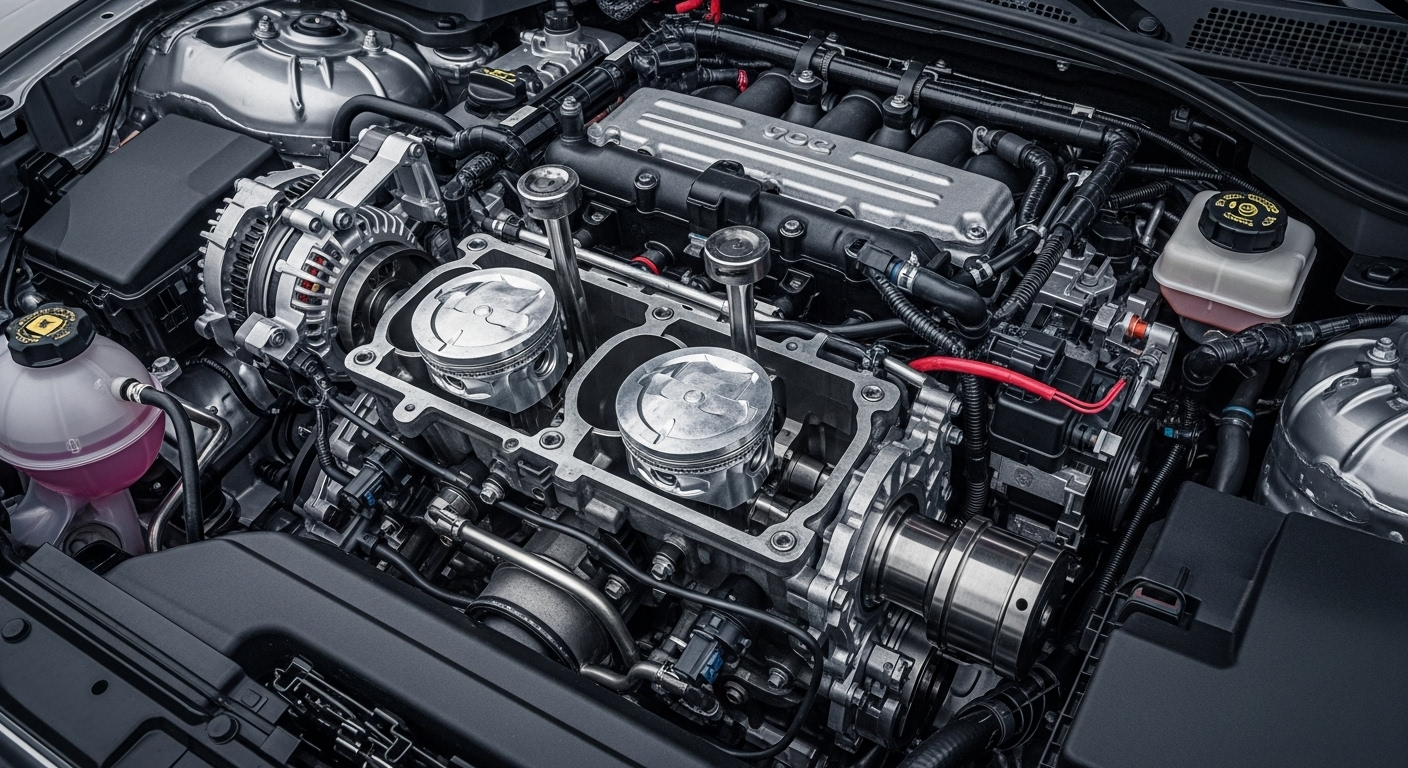Synchromesh: The Unsung Hero of Smooth Gear Shifts
Imagine gliding down an open road, effortlessly shifting gears as your car purrs through each transition. This seamless experience, often taken for granted, is made possible by an ingenious yet often overlooked mechanism: synchromesh. As we delve into the world of automotive engineering, we'll explore how this revolutionary technology transformed driving and continues to play a crucial role in modern vehicles.

The Birth of Synchromesh
Synchromesh technology emerged in the late 1920s as a solution to the difficulties associated with gear shifting in early automobiles. Invented by Earl Avery Thompson while working for General Motors, the first synchromesh system was introduced in the 1928 Cadillac LaSalle. This innovation marked a significant turning point in automotive history, making manual transmissions more accessible to the average driver and greatly improving the overall driving experience.
The principle behind synchromesh is deceptively simple yet remarkably effective. Its primary function is to synchronize the rotational speeds of the gears before they engage, eliminating the need for the driver to manually match these speeds. This synchronization occurs through a clever combination of friction materials and precisely engineered components, working in harmony to create a smooth transition between gears.
How Synchromesh Works
At its core, a synchromesh system consists of several key components: the synchronizer ring, the blocker ring, and the sliding gear. When a driver moves the gear lever, these components work together to bring the speed of the gear being engaged in line with the shaft it’s connecting to. The synchronizer ring, typically made of brass or carbon fiber, creates friction against the cone of the gear, gradually equalizing their speeds.
The blocker ring plays a crucial role in preventing premature engagement. It acts as a safeguard, ensuring that the gears can’t mesh until their speeds are fully synchronized. This intricate dance of components happens in a fraction of a second, allowing for quick and smooth gear changes that feel almost effortless to the driver.
The Impact on Driving Dynamics
The introduction of synchromesh had a profound impact on driving dynamics and accessibility. Suddenly, operating a manual transmission became significantly easier, opening up the joy of driving to a broader audience. The reduced mental and physical effort required for gear changes allowed drivers to focus more on the road and the overall driving experience.
Moreover, synchromesh technology contributed to the longevity of transmissions. By reducing the wear and tear associated with gear grinding, it helped extend the life of gearboxes and reduced maintenance costs for vehicle owners. This improvement in reliability and durability was a significant factor in the widespread adoption of manual transmissions throughout the 20th century.
Evolution and Refinement
Since its inception, synchromesh technology has undergone continuous refinement. Modern synchromesh systems are marvels of engineering, incorporating advanced materials and precision manufacturing techniques. Carbon fiber synchronizer rings, for instance, offer improved performance and durability over their brass counterparts.
One significant advancement has been the development of multi-cone synchromesh systems. These designs use multiple friction surfaces to distribute the synchronization force more evenly, resulting in even smoother and faster gear changes. This innovation has been particularly beneficial in high-performance vehicles where rapid, precise shifting is crucial.
Synchromesh in the Age of Automation
In an era where automatic transmissions and dual-clutch gearboxes are becoming increasingly prevalent, one might wonder about the relevance of synchromesh technology. However, manual transmissions continue to hold a special place in the hearts of driving enthusiasts, and synchromesh remains an integral part of their design.
Furthermore, the principles behind synchromesh have found applications beyond traditional manual gearboxes. Many modern automated manual transmissions and dual-clutch systems incorporate similar synchronization mechanisms to ensure smooth gear changes, albeit controlled by computers rather than the driver’s hand.
The Future of Gear Synchronization
As we look to the future of automotive technology, the role of synchromesh continues to evolve. While electric vehicles with their single-speed transmissions might seem to herald the end of gear-shifting as we know it, the principles of speed synchronization remain relevant in various automotive applications.
Research is ongoing into advanced synchronization technologies that could further improve the efficiency and performance of both manual and automated transmissions. These developments could lead to even smoother, faster gear changes and improved fuel efficiency in internal combustion engine vehicles.
Preserving a Legacy
Synchromesh technology stands as a testament to the ingenuity of automotive engineers. Its impact on the driving experience cannot be overstated, transforming what was once a challenging aspect of operating a vehicle into a seamless, almost unconscious action for millions of drivers worldwide.
As we embrace new automotive technologies, it’s worth taking a moment to appreciate the silent hero that has been working behind the scenes of our gear shifts for nearly a century. Synchromesh may not be the most glamorous or talked-about automotive technology, but its contribution to the art and science of driving is undeniable.
In conclusion, the story of synchromesh is a reminder of how seemingly small innovations can have profound and lasting effects on our daily lives. It’s a celebration of engineering prowess and a nod to the ongoing quest for automotive perfection. As we shift gears into the future of transportation, the legacy of synchromesh will undoubtedly continue to influence and inspire automotive design for generations to come.





